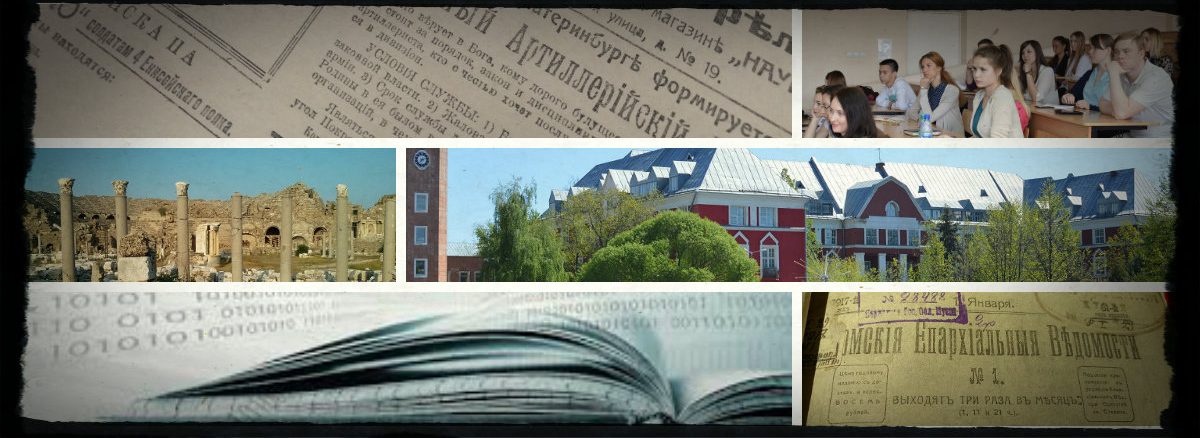Ключевое слово: всеобщая история
Spartacus Educational
In September, 1997, Spartacus Educational founder and managing director John Simkin became the first educational publisher in Britain to establish a website that was willing to provide teachers and students with free educational materials.
According to a survey carried out by the Fischer Trust, Spartacus Educational is one of the top three websites used by history teachers and students in Britain (the other two are BBC History and the Public Record Office’s Learning Curve). The Spartacus Educational website currently gets up to 7 million page impressions a month and 3 million unique visitors.
Источник описания:Spartacus Educational
ERIC
ERIC indexes a wide variety journal sources. The coverage of an approved journal source is determined by an examination of three to five current issues during the source review process. A journal may be switched between being comprehensively, selectively, or occasionally indexed at any time. Source coverage is defined as follows:
- Comprehensively indexed journals contain an average of 80% or more education-related articles; ERIC creates a bibliographic record for all articles in every acquired issue.
- Selectively indexed journals contain an average of 50-79% education-related articles and are critical to topic area coverage; ERIC applies a manual article-by-article selection process and indexes only the articles that conform to the standard and criteria outlined the selection policy.
- Occasionally indexed journals contain an average of 25-49% education-related articles and are determined to be critical to topic area coverage; ERIC applies a manual article-by-article selection process and indexes only the articles that conform to the standard and criteria outlined the selection policy.
The journals currently approved for indexing in ERIC are listed below.
Источник описания:ERIC
DHQ: Digital Humanities Quarterly
Ethnologue
Ethnologue: Languages of the World is a comprehensive reference work cataloging all of the world’s known living languages. Since 1951, the Ethnologue has been an active research project involving hundreds of linguists and other researchers around the world. It is widely regarded to be the most comprehensive source of information of its kind.
The information in the Ethnologue will be valuable to anyone with an interest in cross-cultural communication, bilingualism, literacy rates, language planning and language policy, language development, language relationships, endangered languages, writing systems and to all with a general curiosity about languages.
Источник описания:Ethnologue
History Channel
BBC: History
Roy Rosenzweig Center for History and New Media (RRCHNM)
Since 1994 under the founding direction of Roy Rosenzweig, the Roy Rosenzweig Center for History and New Media (RRCHNM) at George Mason University has used digital media and computer technology to democratize history—to incorporate multiple voices, reach diverse audiences, and encourage popular participation in presenting and preserving the past. The center itself is a democratic, collaborative space where over fifty scholars, developers, designers, and researchers work together to advance the state of the art.
RRCHNM uses digital media and technology to preserve and present history online, transform scholarship across the humanities, and advance historical education and understanding. Each year RRCHNM’s many project websites receive over 20 million visitors, and over a million people rely on its digital tools to teach, learn, and conduct research.
Источник описания:Roy Rosenzweig Center for History and New Media (RRCHNM)
Teachinghistory.org
Teachinghistory.org is designed to help K–12 history teachers access resources and materials to improve U.S. history education in the classroom. With funding from the U.S. Department of Education, the Center for History and New Media (CHNM) has created Teachinghistory.org with the goal of making history content, teaching strategies, resources, and research accessible.
Funded by the U.S. Department of Education (contract number ED-07-CO-0088), Teachinghistory.org is designed to help K–12 history teachers access resources and materials to improve U.S. history education in the classroom.
Teachinghistory.org, funded through the Office of Innovation and Improvement’s Teaching American History (TAH) program, builds on and disseminates the valuable lessons learned by more than 1,000 TAH projects designed to raise student achievement by improving teachers’ knowledge and understanding of traditional U.S. history.
The Roy Rosenzweig Center for History and New Media (CHNM) has created Teachinghistory.org with the goal of placing history content, teaching strategies, current research and issues, community building, and easy access to resources at center stage.
We aim to bring together the many communities involved in improving history education and professional development for history teachers, allowing practitioners, historians, administrators, and history educators to present multiple perspectives, debate current issues, and work together to improve history teaching in classrooms throughout the United States.
The content of this website does not necessarily reflect the views or policies of the U.S. Department of Education nor does mention of trade names, commercial products, or organizations imply endorsement by the U.S. Government.
Источник описания:Teachinghistory.org
Spatial History Project
The Spatial History Project at Stanford University is a place for a collaborative community of students, staff, and scholars to engage in creative spatial, textual and visual analysis to further research in the humanities.
We are part of the Center for Spatial and Textual Analysis (CESTA) along with Humanities+Design and the Literary Lab on the top floor of Wallenberg Hall.
We continually seek fruitful collaborations with faculty at Stanford and beyond, and hire motivated students year round. If you are interested in learning more, please contact Matt Bryant.
Источник описания:Spatial History Project
